Travel across Asia with these Japanese movies to watch right now to take you there and teach you more.
If you are headed to Japan or wish to travel abroad via armchair, there are plenty of great Japanese films set in and about the country to watch.
For families, find fantastic animated movies from Japan as well as light-hearted high school romances.
Thrill-seekers will encounter high-speed car chases and fatal curses. Meet a witch or run from a ghost.
Head back in time and watch historical movies about Japan that will teach you more. Or, catch a glimpse into the future, cyborgs included.
So, what are the best Japanese movies to watch right now on HBO, Hulu, Netflix, Amazon Prime Video, and more?
Of course, “best” is subjective, and we’d love to hear your favorite Japanese movie (or ten!) in the comments. Let’s get started.
*Please know that since our readership is based largely in the U.S., we tried to select movies that are accessible and available in America or that you can add to your watchlist. Some are harder to obtain, though.
Watch even more movies across Asia.
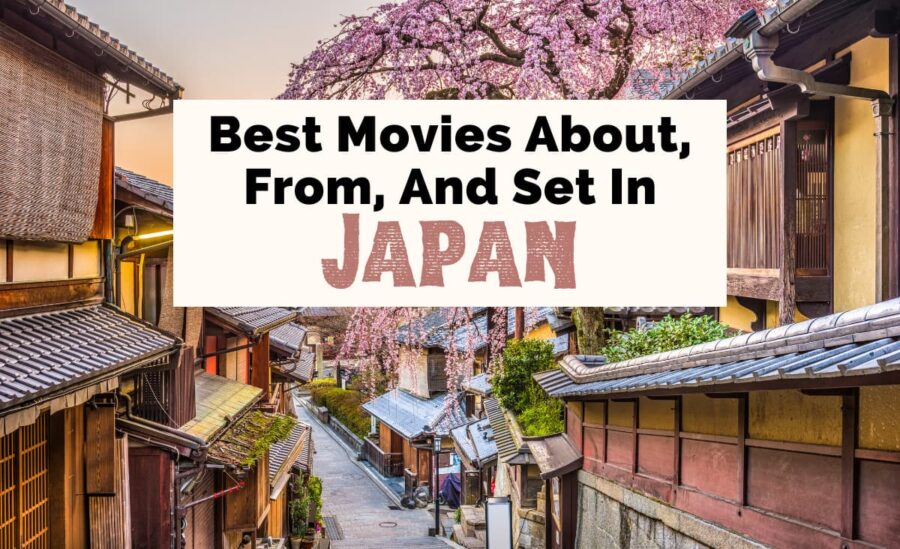
Grab the best Japanese films (and books) here:
- Express VPN – Using Virtual Private Networks (VPNs) allows you to view movies worldwide – and they help keep your information safe. Our writers couldn’t have such diverse film reviews without a VPN.
- Amazon Prime Video – Stream thousands of ad-free movies and TV series on demand with Prime Video.
- Audible Plus: From Amazon, listen to Amazon Originals, podcasts, and audiobooks. They add new titles every week.
36 Japanese Movies To Watch Now
Spirited Away (2001)
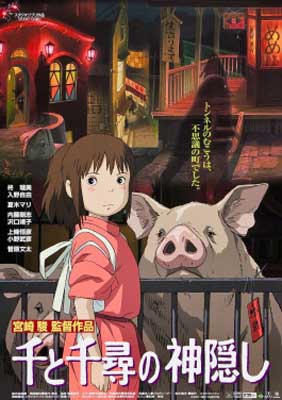
While moving to a new district of Japan, Chihiro and her parents accidentally get lost on the drive to the new house.
Stopping at a dead end, they find a tunnel that leads to what Chihiro’s dad believes is an abandoned theme park.
As they explore this seemingly abandoned place, Chihiro’s parents discover a buffet of delicious food and begin eating.
However, when Chihiro tries to get them to stop and leave, she finds that they have been turned into pigs.
To make matters worse, there’s now a river between them and their exit.
Unknowingly, they have crossed into the spirit realm, and Chihiro must use her wits and any help she can get from the locals to rescue her parents from the clutches of the evil witch Ubaba.
Upon its release, Spirited Away became the first (and so far only) non-English language film to win the Oscar for Best Animated Feature.
With a combination of an engaging story, excellent animation, and an amazing amount of creativity, this is one of the best Japanese films for families to watch, both with English dubbing or subtitles if you prefer.
Watch even more great animated fantasy movies.
Akira (1988)
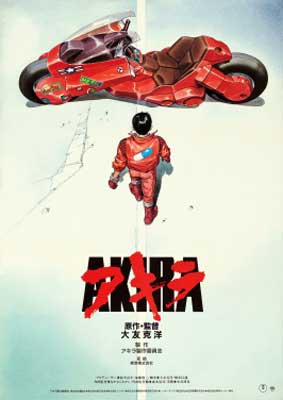
31 years after World War Three destroyed the city of Tokyo, Kaneda and Tetsuo spend their nights riding in their biker gang on the streets of the rebuilt metropolis that is Neo-Tokyo.
When Tetsuo is injured in an accident, he is taken not to a hospital but to a top-secret military facility.
There he is subjected to experiments that greatly expand his mental capacities, giving him the power to move things with his mind.
But instead of being a willing test subject, Tetsuo goes on a rampage, and it’s up to his friend Kaneda and a group of similarly enhanced individuals to try to bring him in.
Along with all of this, a great mystery hangs in the air: who – or what – is Akira?
This is the film that broke anime movies into Western popular culture – and with good reason. The effects are considered groundbreaking for the time, and they still hold up today.
Akira is widely regarded as a landmark achievement in Japanese animation and as one of the best Japanese movies to watch of all time.
Battle Royale (2000)
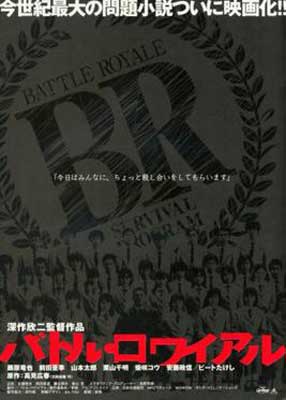
In the near future, in order to combat the rise in youth crime rates, the Japanese government initiates the Battle Royale Act: Every year, a randomly selected class of students will be taken to a remote area and forced to fight to the death.
One year after his father’s suicide, Shuya Nanahara and his middle school class are gassed while on a school trip and wake up at an island BR facility.
Greeted by Kitano, one of their former teachers, they are told that they have three days to complete the exercise.
Each student is given a bag of supplies and a random weapon – ranging in usefulness from a pot lid to a machine gun – and sent out onto the island.
As factions emerge and schoolyard rivalries become deadly, Shuya must work out how to survive when there can be only one “winner.”
Due to its violent subject matter, Battle Royale is definitely not for everyone and was considered controversial upon its release.
However, it is one of the most important movies from Japan to tackle social commentary and youth culture.
Find this movie on our island film list too.
13 Assassins (2010)
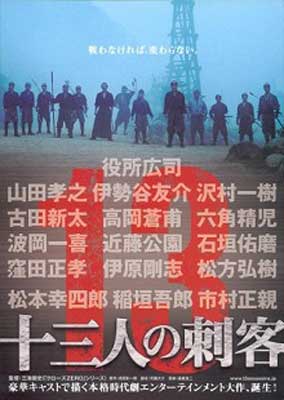
1844, Edo Period Japan: The Military government is in decline, and the sadistic Lord Matsudaira Naritsugu is spreading violence among the people.
By his own hand, he tortures and murders both nobles and commoners alike, but due to his familial connection to the Shogun, no one dares do anything about him.
In fact, he is due to be promoted to the Shogunate Council – an act that could lead to civil war.
In order to stop the havoc he will wreak, justice minister Sir Doi Toshitsura reaches out to a trusted ally, the seasoned samurai Shimada Shinzaemon.
Under Sir Doi’s instructions, Shinzaemon recruits a team of samurai and devises a plan to defeat Lord Naritsugu at any cost, even their lives.
Director Takeshi Miike’s big-budget epic is wildly entertaining and features the rare feat of having a climactic battle that isn’t an overlong incoherent mess.
This is one of the must-watch Japanese movies for anyone looking for an exciting historical samurai film.
Zatoichi (2003)
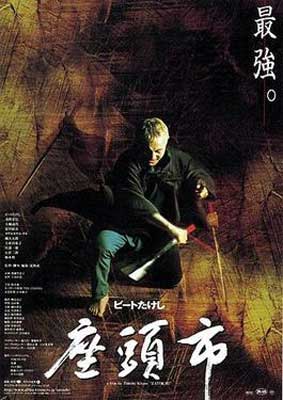
In the historic Edo period, the blind masseuse Zatoichi travels from town to town looking for work and also the opportunity to gamble.
Seemingly affable and harmless, Zatoichi keeps a deadly secret: he is the greatest sword fighter in Japan, with unparalleled accuracy and precision despite his lack of sight.
When he happens upon a town where the residents are being ruined by local yakuza and a powerful samurai, he decides to take matters into his own hands and cut a bloody swathe through those who are evading justice.
But he’s not the only one; two beautiful geishas are also in the town, and they too have a score to settle.
Zatoichi (also known as The Blind Swordsman: Zatoichi) is a highly stylized reinvention of a popular Japanese film and TV character.
Using modern film techniques, styles, and effects, writer/director/star Takeshi Kitano has made one of the most cinematic and unique movies about Japan.
Ghost in the Shell (1995)
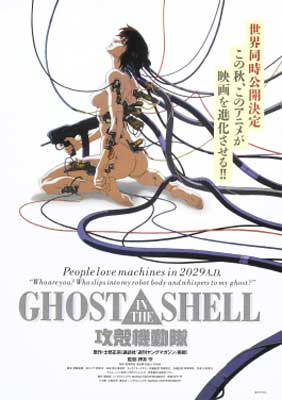
In the year 2029, advancements in technology have led to two significant breakthroughs.
Firstly, human brains can now directly connect to the internet. Secondly, human/robot hybrids are commonplace.
One such cyborg is Major Motoko Kusanagi, an elite and highly trained officer who works for the secret police force Section 9.
As an agent who deals primarily with cybercrime and counter-terrorism, she is on the trail of a mysterious cyber criminal known as the Puppet Master, who has been hacking into the brains of cyborgs and making them do their bidding.
Pay no attention to the 2017 live-action version – this animated cult classic is the real deal.
Ghost in the Shell’s title refers to the idea of the human consciousness inside a robotic body, and there are some big themes on the nature of existence being explored here.
On top of that, this is one of the landmark Japanese movies that showcase the cyberpunk style to the rest of the world.
Yojimbo (1961)
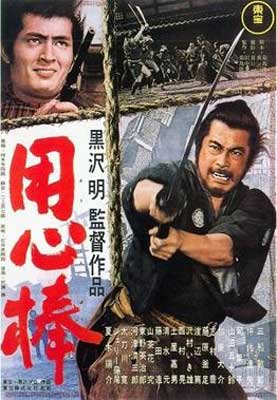
Towards the end of the Edo Period in nineteenth-century Japan, a nameless samurai stops for water at a farm.
While there, he overhears talk of a nearby town that is overrun with gangsters.
Traveling to this town, the samurai learns that there are two rival gangsters fighting with each other for control of the territory and that their actions have caused the suffering of many families.
Adopting the name Sanjuro, the samurai uses his wits and cunning to play each side off against the other, and with each violent action, the criminals unknowingly bring themselves closer to ruin.
Starring Toshiro Mifune in one of his 16 collaborations with legendary director Akira Kurosawa, Yojimbo is one of the most iconic Japanese films ever made.
Even if you’ve not yet seen this cinematic masterpiece, you may already be familiar with its most famous remake: A Fistful of Dollars, Sergio Leone’s genre-defining “spaghetti western” that first put Clint Eastwood’s cigarillo-chomping nameless gunslinger into the public consciousness.
Ringu (1998)
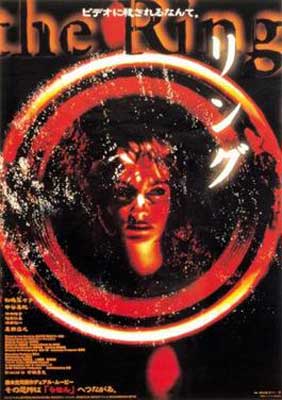
An urban legend tells of a cursed videotape, and that those who watch it meet their demise seven days later.
While at a sleepover, high schooler Tomoko tells her friend Masami that she and a group of friends watched something like that the week before.
When Masami comes back from a bathroom break, she finds Tomoko dead with a horrific expression on her face.
Journalist Reiko Asakawa is Tomoko’s aunt, and she begins to investigate this supernatural phenomenon.
Soon, more teenagers begin to be found, all with similar expressions on their faces, and Reiko finds herself pulled into the curse as well. Can she find a way to stop these deaths before she also is killed?
Ringu (“The Ring”) made a significant impact on horror cinema both in the East and in the West, where it added a new movie monster to the Western horror rogue’s gallery in the form of the “creepy, long-haired girl in the white dress.”
This folk horror film is as inventive as it is terrifying and a Japanese movie you need to watch with a group of friends.
The story makes for one spooky book to read too.
Rashomon (1950)
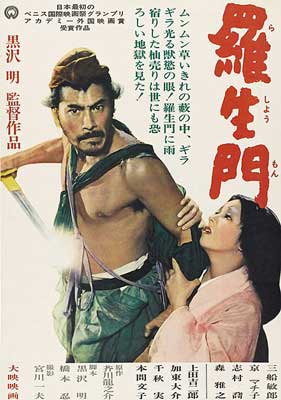
This classic film recounts a horrific crime that takes place during the Heian era in Kyoto (then called Heian-Kyō).
The events are told from the point of view of four different people, with each person’s account altering the story.
When a young bride is raped and her samurai husband murdered, everyone knows that Tajōmaru, an infamous bandit, is responsible. And he doesn’t deny it.
However, no one can decide exactly what happened.
Four distinct series of events emerge from the bandit, the wife, the ghost of the dead samurai husband, and the woodcutter who found his body.
Rashomon is one of the most famous Japanese movies to watch, and it is one of the first films to use the plot device of multiple POVs all telling similar, but slightly different versions of the same event.
In fact, this style is commonly referred to now as the “Rashomon effect.”
Seven Samurai (1954)
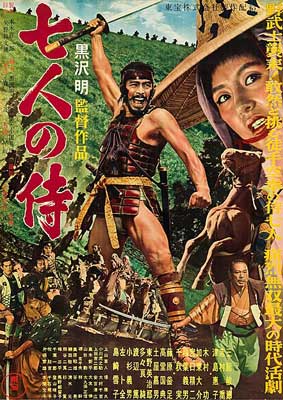
In 1597, a village in Japan is being being attacked and raided by bandits.
Answering their calls for help is aging masterless samurai Kambei, who pledges to help defend them even though he will receive little to no compensation for doing so.
To help him in this endeavor, Kambei calls upon six other disparate mercenary samurai to join him.
Knowing this could be his last act, Kambei and the group train the villagers to be better able to defend themselves, as the threat of an all-out bandit attack looms.
Endlessly referenced, Seven Samurai is a staple of the trope of a group of ragtag yet skilled people coming together for “one last job.”
Remade in the West as The Magnificent Seven, it stands as a masterpiece among movies from Japan.
Kiki’s Delivery Service (1989)
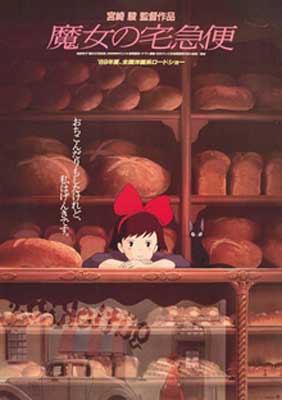
In Hayao Miyazaki’s delightful interpretation of Eiko Kadono’s novel, we follow the journey of Kiki, a thirteen-year-old witch who must spend a year away from home, as is a tradition among witches.
Making her way with only her black cat Jiji for company, she flies on her broom to the port city of Koriko.
After an awkward arrival in which she causes a minor accident, Kiki manages to get taken under the wing of kindly pregnant baker Osono and her husband.
With her help, she establishes Kiki’s Delivery Service: a business in which she can deliver packages quickly by means of her flying powers and make a living for herself.
The films of Studio Ghibli are charming to a fault, and this slice-of-life magical realism tale is no exception.
Kiki’s Delivery Service is one of the best Japanese films for children of all ages, and it has plenty for adults to engage with as well.
The Girl Who Leapt Through Time (2006)
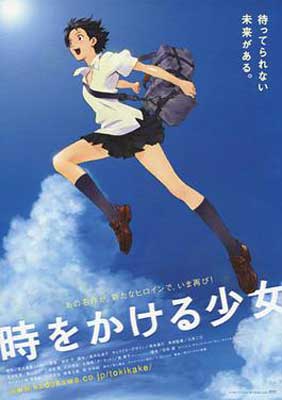
What would you do if you could time travel? That’s what seventeen-year-old Makoto gets to find out in this light-hearted high school romance.
Having wandered into an empty classroom, Makoto accidentally falls onto an unusual object and finds she now has the ability to literally throw herself through time.
Initially, she is thrilled to be able to redo all the things that frustrated her in her day-to-day life.
She is able to get full marks on her tests, she manages to avoid all the accidents her clumsiness would have caused, and she can relive the same karaoke session for hours at a time.
However, she starts to realize that her changes have bad consequences for her friends and family and that she only has a limited number of leaps left.
Anyone familiar with high school life will have lots to enjoy in this film version of the 1967 novel of the same name by Yasutaka Tsutsui.
The characters are relatable, and despite her faults, Makoto is a fun protagonist. If you love time travel movies, you might enjoy these books featuring time travel.
Or, try these time loop movies.
Godzilla (1954)
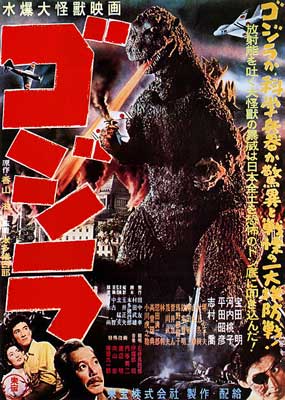
Ships are being mysteriously destroyed near Odo Island.
Fishermen in the area are telling of how their catches are becoming non-existent. A village on the island is destroyed – seemingly crushed by something very large indeed.
The city of Tokyo is about to discover that testing underwater nuclear devices was not a good idea – for they have awakened an unstoppable force: Godzilla, a 50m tall fire-breathing lizard!
Godzilla is the undisputed king of Japanese movie monsters.
In fact, Godzilla is such a popular character in Japanese cinema that it holds the record for the longest-running film franchise in history.
Made in the mid-fifties, Godzilla took advantage of the newly created worldwide fear of nuclear power.
Sure, the effects are dated. But for many, that adds to the charm, and Godzilla remains one of the most iconic Japanese movies ever made.
Watch even more great fantasy Japanese films.
Audition (1999)
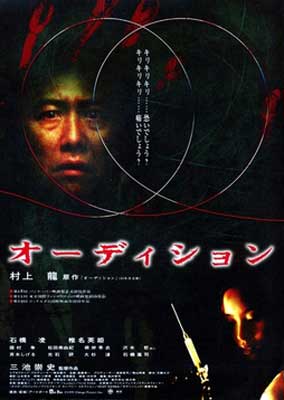
Ever since his wife passed away, Shigeharu has been raising their son Shigehiko on his own.
Now, seven years later, the teenage Shigehiko encourages his dad to get back out into the dating world and find a new partner who might make him happy.
In order to find someone compatible, and because he believes his dating skills to be rusty, Shigeharu asks his friend Yasuhisa, a film producer, for help.
Yasuhisa suggests holding casting sessions for a fake film, with the requirements being Shigeharu’s wishlist of what he would like in a partner.
They can then “audition” several people and see if he feels a spark with anyone.
As it happens, he finds himself enraptured by one lady, named Asami, and the two begin dating. However, things are not necessarily what they seem.
But as you might be able to tell from looking at the movie poster, Audition isn’t just a romantic drama. There is a much darker side to this Japanese movie.
Part of the appeal – or possibly the problem – of Audition is that the less you know about it going in, the greater the impact it will have on you.
As long as you’re prepared to have your expectations subverted, and you respect the strong adult rating, this is one of the best Japanese movies to experience for the first time.
Drive My Car (2021)
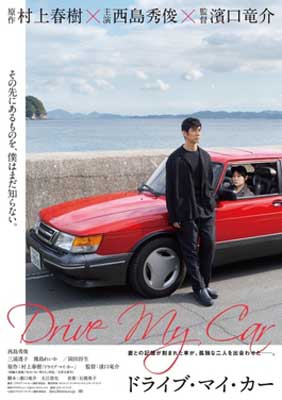
Drive My Car has quickly become one of the most talked about movies from Japan in recent years, having been nominated for and winning several international awards.
And all of the praise is well deserved!
Yūsuke Kafuku, a popular theater actor and director, and his screenwriter wife, Oto, have a seemingly happy marriage.
We soon learn that might not be the case when Yūsuke sees her having sex with another man but leaves rather than confront them.
However, when his wife unexpectedly dies, Yūsuke breaks down during a performance and temporarily retires from acting.
Two years later, he is offered a job in Hiroshima director Chekov’s Uncle Vanya – the last play he was ever in. He accepts but is told he must have a driver and cannot go anywhere by himself.
As he and his driver, Watari, slowly begin to bond, the layers of Yūsuke and Oto’s lives start to unfurl.
The film is largely based on a short story by Haruki Murakami, one of the most internationally well-known Japanese authors.
Fast & Furious: Tokyo Drift (2006)
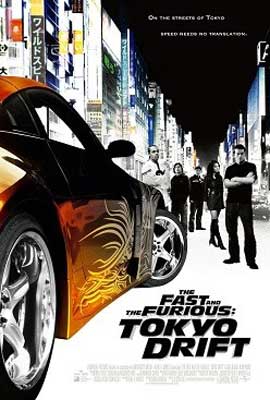
The third installment in the Fast & Furious Franchise – but chronologically the sixth film in the series – can also be enjoyed as a standalone film about street racing in Japan.
It was also retroactively deemed a sequel to Justin Lin’s indie hit Better Luck Tomorrow.
In this one, we are introduced to Sean Boswell (in my opinion the WORST character in the entire franchise) and Han (hands down the best character).
Sean is a problem child, having been kicked out of so many schools – and having committed enough car-racing-related crimes – that his mom sends him to live with his military father in Tokyo to avoid jail.
In Tokyo, Sean makes friends with other foreign kids and through them is soon introduced to the world of drift racing.
He is taken under the wing of Han who teaches him how to drift.
Tokyo Drift is hardly elevated cinema. But if, like us, you love silly movies about fast cars, this will easily become one of your favorite go-to movies about Japan.
Still Walking (2008)
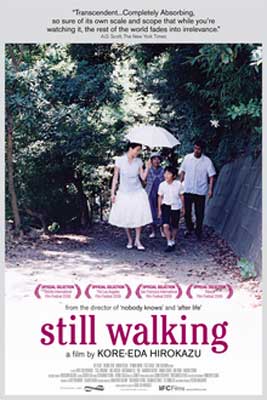
12 years ago Toshiko and Kyohei lost their eldest son Junpei when he drowned saving a young boy.
Every year since, they invite their surviving son, Ryota, to celebrate Junpei’s life for 24 hours.
Ryota resents this tradition as he knows Junpei was the favorite son, but he dutifully attends.
This year he has brought along his new wife – a widow, whom his parents see as bad luck – her son and their daughter.
As the day unfolds, tensions rise as we see each family member struggle to move on from this singular, life-changing event.
If you like hard-hitting stories about complex family dynamics, Still Walking will definitely be one of the top Japanese films to watch for you.
Tokyo Story (1953)
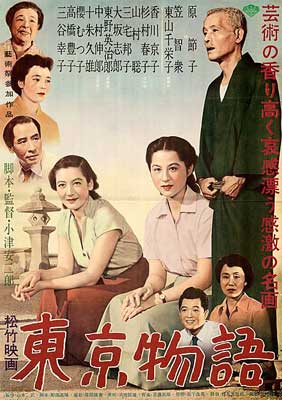
Shūkichi and Tomi are a retired couple living in the Western Japanese city of Onomichi with their youngest daughter Kyōko.
Of their five children, four are still alive, the rest of whom live outside of Onomichi.
The couple decide to visit Tokyo where their eldest son and daughter live – as well as their deceased son’s wife – and where their youngest son lives.
However, upon arrival, they feel neglected by their children and find that only their daughter-in-law is welcoming.
For those who love a drama about the chasms between parents and their children, Tokyo Story is for you – just make sure to keep the tissues nearby.
Although now considered one of the best Japanese movies ever made, sadly this classic was not initially appreciated for the masterpiece it is by audiences outside of Japan.
It was even considered “too Japanese” to market internationally.
Tokyo Godfathers (2003)
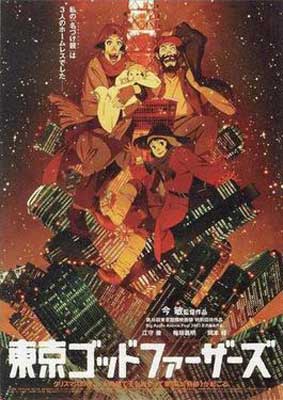
On Christmas Eve, a baby is abandoned and left in a box in the garbage.
Fortunately, the box is discovered by three homeless people looking for presents – teenage runaway Miyuki, transgender woman Hana, and middle-aged alcoholic Gin.
The trio finds that there is a mysterious key in the box as well, which upon investigation leads to a bag full of clues as to the baby’s parents.
Despite initially disagreeing on what to do with the baby, they decide to embark on a quest to reunite the baby (which they name Kiyoko) with the parents.
Little do they know that their mission will take them on a wild adventure and lead all three to some much-needed moments of self-discovery and learning.
This is not your average animated Christmas movie. The visual style is very distinct, and there are some very serious and harrowing story elements.
But Tokyo Godfathers is still a great choice for anyone looking for unconventional animated movies about Japan.
Ride or Die (2021)
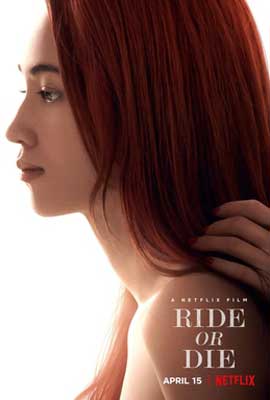
In this revenge fuelled LGBT+ Japanese movie, Rei has been in love with Nanae for years.
So when Nanae confesses that her husband is abusive and she fears he will kill her, Rei decides the only course of action is to kill him.
Nanae struggles with Rei’s actions, while Rei seems unfazed by her decision, having done what she deemed necessary to save her friend.
Despite her reservations, the two stick together as each has nowhere else to go, and together they go on the run.
Soon their feelings for each other start to bloom into something more than Rei’s pining and Nanae’s loyal friendship.
But will they get their happily ever after, or will the consequences catch up to them and prevent that from happening?
Based on the popular manga series Gunjō, Ride or Die is for anyone looking for romantic Japanese movies.
After Life (1998)
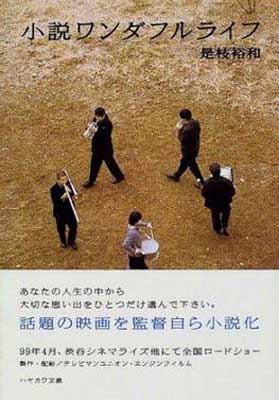
Some of the best Japanese movies to watch leave you with a sense of existential wonder, and that feeling comes on strong when you watch After Life.
Set in a world that’s somewhere between life and death, this Japanese movie sees the recently deceased arrive not in heaven (yet), but instead at a way station for souls.
Here, the new arrivals will be “processed” by the workers at the way station, whose job it is to work out the happiest memory of each person so that they can experience it for eternity.
We follow two of the “counselors” – Takashi and Shiori – who begin to re-evaluate themselves during the processing of the latest batch of arrivals.
This fantastical drama covers a lot of emotional ground concerning the concept of death and the afterlife.
After Life is definitely one of the top Japanese movies for those interested in themes of love and memory.
The Boy and the Beast (2015)
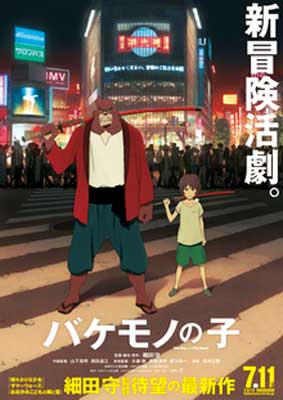
9-year-old Ren has now become an orphan.
Living on the streets of Shibuya, Tokyo, he’s all on his own now that his mother has died, seeing as his father is out of the picture completely.
But when all seems bleak for Ren, fate intervenes and he stumbles upon the towering and imposing Kumatetsu of the Beast Kingdom.
Kumatetsu has been wandering Tokyo in search of a disciple and student, and he thinks Ren could be it.
However, both boy and beast have a long way to go before they find their place in their respective worlds.
Anyone looking for good Japanese movies to watch that have a strong father/son bonding theme will have a lot to enjoy in this energetic animated film from writer/director Mamoru Hosoda.
Only Yesterday (1991)
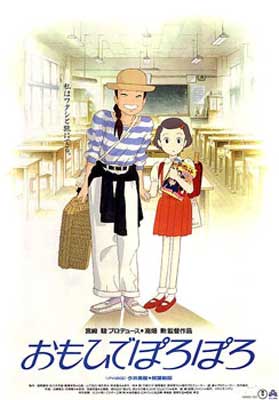
Anyone who has spent too much time in the city should check out Only Yesterday, one of the best self-reflective and nostalgic animated movies from Japan.
Having lived pretty much her entire life in Tokyo, 27-year-old Taeko Okajima decides to get away from it all and head out into the countryside to see her elder sister’s in-laws in Yamagata.
When she arrives at the train station, she is surprised to be met by Toshio, her brother-in-law’s second cousin and someone she hardly knows.
As she spends time in Yamagata with Toshio, the two get to know each other better, and Taeko begins to reflect on her life, thinking back to how she felt as a child in the 1960s.
Switching back and forth between scenes of Taeko’s childhood and the modern day, we get to see the full beauty of a rustic life mixed with lively animations of childish wonder.
Japanese films like this will bring out your inner kid!
Mary and the Witch’s Flower (2017)
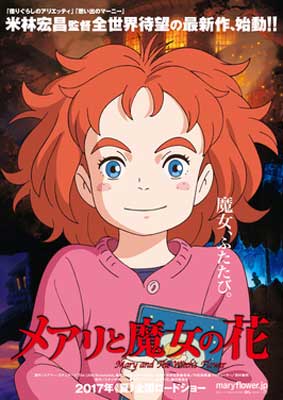
If there’s one thing Mary Smith wants, it’s something to do. She’s now living with her Great Aunt Charlotte in the rural north of England, and it’s just so boring!
But Mary’s wishes for entertainment are answered one day when she discovers some mysterious glowing purple flowers out in the woods.
When she accidentally gets some of the flowers on an old broomstick, she and her cat are literally pulled into an adventure high in the sky, where Mary discovers the Endor College for witches.
With no idea what to do now, things get even more complicated when the headmistress of the college mistakes her for a new student.
It looks like Mary is about to learn some magic!
As the first feature film for Japan movie maker Studio Ponoc, this is a great entry into their burgeoning catalog, with a spirited heroine and dazzling visuals which will delight all ages.
One Cut of the Dead (2018)
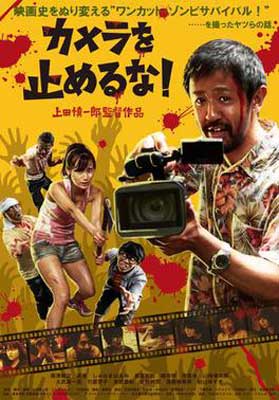
Here we have one of the more creative and darkly humorous Japan movies to watch for anyone who loves horror, gore, and comedy.
At the start of the movie, a film crew heads out to an abandoned water filtration plant in order to shoot a low-budget zombie movie.
The title of the movie is “True Fear,” and the team’s director, Higurashi, really needs this to go well.
In fact, he’s so desperate for success that when he becomes frustrated at his actors, he orders a blood pentagram to be painted to add to the spookiness.
The plant has a haunted past, and Higurashi thinks it would be great if some actual zombies turned up. But unfortunately for everyone, they do.
One Cut of the Dead takes influence from horror movie classics (its title is a homage to the …of the Dead series from George A. Romero) and the vibe is similar to the British zom-rom-com Shaun of the Dead.
Expect to be laughing, then grossed out, and then laughing again during one of the more creative Japanese movies of recent years.
Departures (2008)
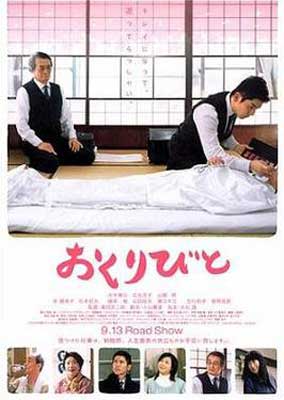
On an unpleasant day in professional cellist Daigo Kobayashi’s life, the orchestra he performs with disbands, leaving him out of a job.
Deciding to start over, he and his wife Mika head to Daigo’s old hometown of Yamagata where they can stay in his childhood home.
While looking for work, Daigo finds an advertisement looking for someone to work in “assisting departures,” and he applies, thinking it’s for a travel agency.
However, it turns out that those “departing” have departed from life, and Daigo has entered the unusual world of the undertakers; he’ll be preparing the recently deceased bodies for their funerals.
Like a lot of the best Japanese films, Departures has a lot to say about the meaning of life and our place in the world.
It offers a great balance of humor and pathos.
Crazy Thunder Road (1980)
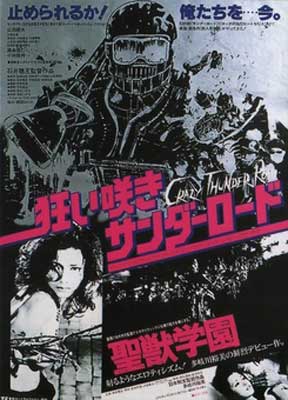
As one of the more in-your-face movies from Japan on this list, Crazy Thunder Road is exactly what you’d expect it to be: loud, frenetic, and a little bit deranged.
Originally a graduation project made by director Gakuryū Ishii while attending film school, this dystopian cyberpunk sci-fi action movie was then given a wider cinematic release by Toei Studios.
Our protagonist is Jin, the leader of a biker gang who falls in love with a barmaid and leaves his criminal ways behind, thereby starting a violent war between rival biker gangs.
The low-budget atmosphere really helps the tone of the film, which has a lot in common with more Western movies like The Warriors and early Mad Max movies.
This is the best Japanese movie to watch in a large group with lots of popcorn.
Linda Linda Linda (2005)
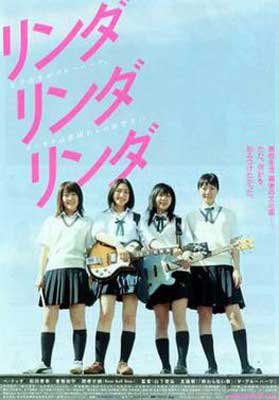
The high school cultural festival is coming up in three days, and one group of schoolgirls has put themselves up as performers in a rock group.
So it’s not exactly perfect when two of the girls – the lead singer and the lead guitarist – both quit the band.
Now time is running out for remaining members Kei, Kyoko, and Nozomi to learn how to play “Linda Linda” by Blue Hearts (the song they’re expected to perform) with a new lineup.
By chance, they grab Son, the first girl to walk by, and persuade her to be their new singer.
There’s just one problem: Son is a Korean exchange student, and doesn’t speak Japanese.
You’ll get swept up in the fun of this music-based comedy-drama, and one of the most euphoric and uplifting Japanese movies to watch.
Howl’s Moving Castle (2004)
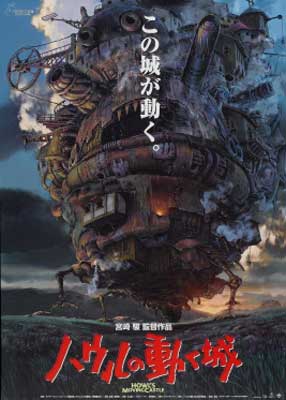
Studio Ghibli is responsible for so many must-watch Japanese movies, and Howl’s Moving Castle is one of the greatest as it mixes charm and whimsy with the serious subject of war.
Sophie is a “plain” young woman who works at a hat shop and is used to keeping her head down and staying out of the way.
But all that changes when she encounters the enigmatic and flamboyant Howl, a master magician with a legendary reputation.
Now cursed by the Witch of the Wastes for just talking to Howl, Sophie must join the residents of his moving castle and find a way to both break the curse and help out those she meets along the way.
Based on the novel of the same name by Diana Wynne Jones, this Oscar-nominated adventure is one of the highlights of Japanese cinema.
Read more about the novel on our castle book list.
A Page of Madness (1926)
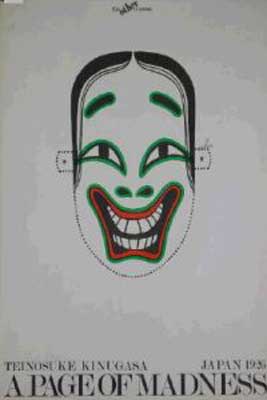
We’ve talked about older movies from Japan from the 1950s on this list, but this one comes all the way from the days of silent cinema – the 1920s!
In it, we follow a janitor who works in an insane asylum in rural Japan. The janitor’s wife is one of the patients there, having been driven mad by his cruel behavior years ago.
Because of his guilt, the janitor accepts a job at the asylum so that he can better take care of his wife.
However, when he learns that his daughter is getting married – and fearing that something may go wrong and prevent the marriage – his perception of reality begins to break down.
As you would expect from a movie about insanity made in the 1920s, A Page of Madness has a very distinctive vibe and an equally striking visual style.
The bold lighting and unsettling painted sets all add to the atmosphere, and the result is something that’s still just as affecting almost 100 years after it was made.
Gate of Hell (1953)
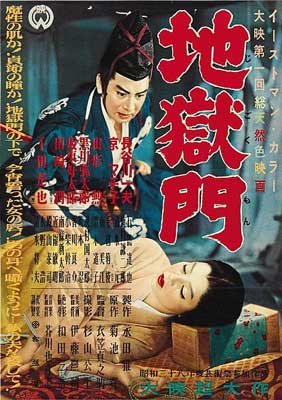
Japan, 1160 AD: during a time of feuding warlords and wandering fighters, Lord Kiyomori and his castle are attacked by rival lords in a coup.
To help the lord’s family escape, loyal samurai Morito suggests having a decoy of the lord’s sister to divert attention away from the real family members.
The lady chosen for the decoy is Kesa, and while with her, Morito develops a powerful obsession with her.
When he is granted a wish for his efforts in helping the lord’s family escape, he asks for Kesa’s hand in marriage.
Unfortunately for Morito, she is already married to another samurai, but that won’t stop him…
This period drama was adapted from a 13th-century picture scroll and won two Academy Awards on its original release.
Not many movies about Japan can claim the same!
Ran (1985)
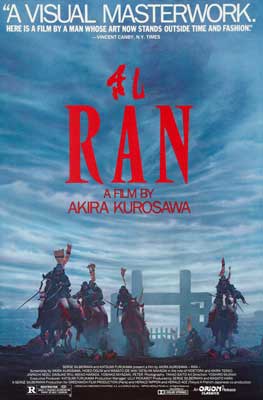
This epic action drama is heavily inspired by Shakespeare’s King Lear and is one of the most famous Japanese movies ever made.
It concerns a powerful, aging warlord in Medieval Japan, who decides to give control of his empire to his three sons.
However, absolute power corrupts absolutely, and soon the three sons are fighting with each other, even turning against their father.
Ran was the last epic movie from legendary filmmaker Akira Kurosawa, who received his only ever directing Oscar nomination for this movie.
With hundreds of extras wearing period costumes, and with many of them riding horses over wide, open fields, the production of this movie was huge and insanely complicated.
However, the results speak for themselves; Ran is not only considered a masterpiece but it’s also been thought of as one of the greatest movies ever made.
Avalon (2001)
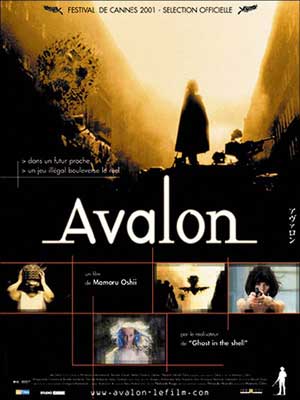
In a dystopian near future, the country has become ravaged by war.
Desperate to escape their desolate daily lives, the young have turned to an artificial reality war game called Avalon to help them cope.
Players can defeat AI bots on various levels in order to win experience points that can be exchanged for cash, causing many to become addicted to the game.
One of the most famous and skilled players is Ash, and one day she hears a rumor about a supposedly more advanced level of the game, hidden somewhere inside.
On her quest to find and defeat it, she slips further away from reality. Is this next level even real?
As a joint Japanese-Polish production, Avalon was filmed in Poland with Polish actors.
So despite being written and directed by Japanese filmmakers, it does look very different from the other Japanese films on this list.
Fortunately, it’s still just as entertaining as the rest!
Shoplifters (2018)
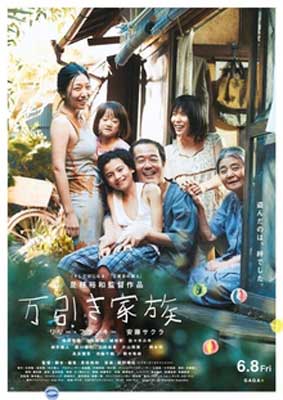
Osamu lives in Tokyo with his “family” – the elderly Hatsue, his wife, Nobuyo, a young woman named Aki, and a little boy named Shota.
The family does what they can to make ends meet, often resorting to illegal means, such as shoplifting.
Osamu and Shota regularly shoplift together as a team using their own signals. They also stick to a code: don’t steal anything that belongs to an individual; stores are fair game.
One evening they see a young girl named Yuri waiting outside in the cold and bring her home. And before long, Yuri is joining Osamu and Shota in their shoplifting.
This found-family drama is one of those Japanese movies to watch that highlights the harsh realities of life and makes you question what it means to be family.
Shoplifters is a great film for those who loved the award-winning Korean film, Parasite.
Tekkonkinkreet (2006)
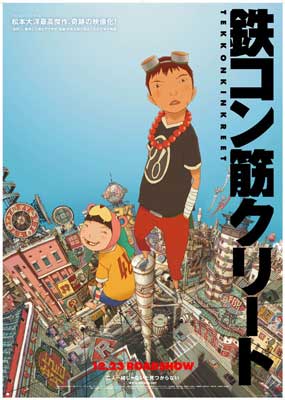
For the people of Treasure Town, life is never boring, mostly because they are under constant threat of violence from the warring gangs that inhabit the area.
Two local residents of this once flourishing, now crumbling town are the children, Black and White.
On the surface, they couldn’t be more different; Black is violent, outgoing, and territorial, whereas White is an almost carefree daydreamer who may or may not be in touch with reality.
Together, they make an unlikely yet highly effective team, all the better to help defend Treasure Town from various gangs, including the Yakuza, who plan to tear the town down and build a theme park.
With a fluid visual style that combines animation with CGI, Tekkonkinkreet is one of the most visually stimulating movies from Japan on this list.
Princess Mononoke (1997)
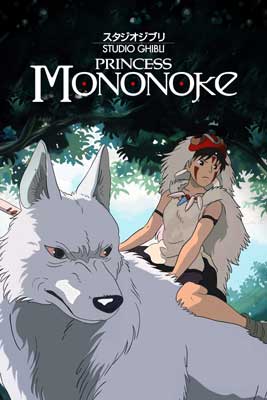
Set during the 14th-century Muromachi period, Princess Mononoke is one of the most iconic Japanese movies.
The delicate peace that once existed between man, nature, and the Gods has fallen apart, leading to conflict.
Ashitaka has just managed to save his village from a demon attack. Unfortunately, the demon managed to touch and curse him before it was defeated.
Desperate to end the curse before he dies in agony, Ashitaka sets out on a journey to the western lands to find the deer-like forest spirit, Shishigami.
Along the way, he meets others who assist him, and some who are themselves at war with the Gods and the elements.
This leads to Ashitaka attracting the attention of the wolf Goddess, Moro, and her human companion.
Can Ashitaka help broker peace between Moro and the humans of the region, or is it already too late to fix the damage?
Princess Mononoke is perfect for fans of animated Japanese films that make them think.
Where to watch these movies & learn more:
Amazon Prime Video | Netflix | IMDb | Hulu | Max
Save your favorite movies from Japan for later:

Grab your favorite Japanese movies and books here:
- Express VPN – Using Virtual Private Networks (VPNs) allows you to view movies worldwide – and they help keep your information safe. Our writers couldn’t have such diverse film reviews without a VPN.
- Amazon Prime Video – Stream thousands of ad-free movies and TV series on demand with Prime Video.
- Audible Plus: From Amazon, listen to Amazon Originals, podcasts, and audiobooks. They add new titles every week.
What Japanese films do you love and recommend?
A few more Japan-related movies not mentioned on this list include Paprika (2006), Silence (2016), and Lost in Translation (2003), a great hotel-based movie.
What are the best Japanese movies that you enjoy?
And, what is your favorite genre? Do you enjoy animated movies? Fantasy? Horror? Let us know in the comments.
